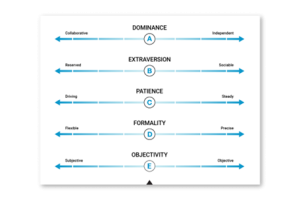Emojis and Remote Workplace Culture
By Admin |
3 min read
With the vast majority of Canadians still working at home or in a hybrid work environment, creating a welcoming and enthusiastic work environment presents a challenge to employers. To lead in the hybrid or remote workplace managers and directors alike need to understand this issue. In their article on using emojis to connect with a team, Yokoi and Jordan explain that “Leaders have often relied on physical cues, such as facial expressions and body language, to gauge and communicate emotions or intent.” They continue, “But doing so is more difficult in the remote workplace, where facial expressions and physical gestures are difficult to both read and convey”. This is where the use of ‘emojis’ can help brighten and illuminate the workplace environment. A recent Harvard Business Review study has identified the following four ways in which you can use emojis to help grow and strengthen relationships within your organization.

1.Get Deeper Insight on How Your Team is Feeling. Having employees select emojis to reflect the way they feel increases levels of self-reflection and self-awareness which has shown to positively impact performance.
2.Build Your Own Cognitive Empathy. It is important for employers to collect data on what motivates their employee to help improve performance. Having employee’s share emojis as part of weekly check-ins can also help encourage more meaningful conversations.
3.Model Appropriate Emotions. Managing employees emotional state is a critical element of leadership; and the use of emojis can help leaders role model emotional cues that are appropriate for different situations their team faces.
4.Reinforce Your Company Culture. Emojis can be used in a company’s daily communications to enhance the emotional culture of the organization.
The Predictive Index® has developed a system of Reference Profile stickers to help strengthen relationships and company culture. The 17 Reference Profiles represent a high-level guide to an employees’ behaviours within an organization. An individual’s Reference Profile is based upon where their A, B, C, and D factors fall in their Predictive Index Behavioural Assessment™. The factors represent the following:
A) Dominance: The drive to exert one’s influence on people or events
B) Extraversion: The drive for social interaction with other people
C) Patience: The drive for consistency and stability
D) Formality: The drive to conform to rules and structure

Dependent on an individual’s level of A, B, C and D factors, they will be matched with a Reference Profile. Understanding an employee’s Reference Profile is very beneficial. The Reference Profile provides information on the strengths and potential caution areas each type of employee might have. Thus, each profile provides guidance on how best to support an employee to increase their chances of success in the workplace. It is important that employees understand their own reference profile along with the profiles of fellow colleagues to promote good relationships and effective teamwork. Having the profile stickers or ‘emojis’ allows for an easy way for employees to self-identify, so that others can gain a better understanding of one another. Strong team relationships and awareness of other’s needs is important to strengthening a company’s culture, and having an easy way to identify one’s own drives and needs as well as others helps to support this.
To learn more about The Predictive Index® and the 17 Reference profiles and how they can enhance your workplace, click here to speak with sales.
References:
Related Blogs
How to Decide Who to Layoff?
How to Decide Who to Layoff? A Strategic Guide Powered by The Predictive Index In uncertain economic climates, tough decisions often become necessary for business continuity. One of the most challenging decisions any organization faces
HR Risk Management – Full Guide
HR Risk Management: A Full Guide with The Predictive Index Advantage In today’s volatile business environment, human capital remains one of the greatest assets—and one of the biggest risks. Organizations are navigating an increasingly complex
9 Tips for Hiring the Best Salesperson
9 Tips for Hiring the Best Salesperson (Backed by The Predictive Index) Hiring the right salesperson can feel like trying to find a needle in a haystack. Sales is a high-stakes role where the right



